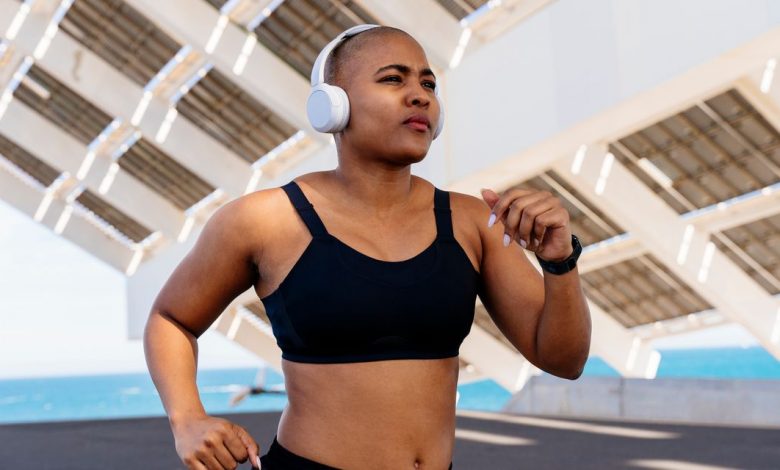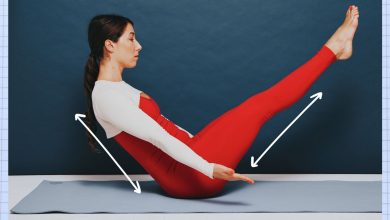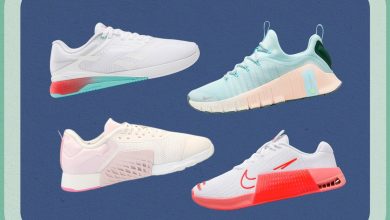Do I Get a ‘Better’ Cardio Workout If I Go Faster or Longer?

If you want to boost your cardio fitness, you’ve got two ways to level up your workouts: push harder or faster, or keep at it for longer. Each option comes with its own challenges. The first can quickly leave you in a breathless pile of sweat, while the second can put you on a struggle bus that feels like it has no end.
But the real question is, do you get a better workout if you go harder, or if you exercise for longer? Well, experts say it comes down to how you define “better”—and how much time you’ve got on your hands.
Longer workouts can create a cascade of changes that boost your endurance, but you’ve got to put in the time.
To get the obvious out of the way: “Long” is a relative term. Thirty minutes of cardio might be enough to challenge some people, while others need to go at it for at least a couple hours. The key is just to go long enough that you pass your comfort zone. “You want a duration that’s ‘slightly embarrassing’ your body,” triathlon coach Susan Sotir, PhD, tells SELF. “You don’t want to humiliate your body. But a little embarrassment’s worth of a stressor, that’s enough.”
Typically, in order to go longer, you need to keep your cardio at a steady state where you’re hitting a low- to moderate-intensity level (also called zone 2 cardio). Think: a four to six on a scale of one to 10. “You could have a chit-chat,” says Dr. Sotir, who also calls it “nose-breathing effort.”
Our bodies can get a whole bunch of aerobic benefits out of hitting this intensity for a sustained period of time: improvement in stroke volume (the amount of blood our heart pumps per beat), a gradual increase in VO2 max (how much oxygen our body can use during exercise), greater plasma volume (the amount of fluids that carry our blood cells), more of the mitochondria that power our cells, and, eventually, a more developed infrastructure of capillaries that deliver nutrients to our tissues. “You also start to build the muscle fibers themselves to be more resistant to fatigue,” Dr. Sotir says. “You’re able to sustain that work with less muscle damage when you do those longer sessions over time.” TL;DR: You’ll end up with better endurance.
Steady-state cardio is also great for heart health. “You’ll see cardiovascular risk reduction, lower resting heart rate, blood pressure, and improved lipid profile level,” exercise physiologist Susie Reiner, PhD, CSCS, a post-doctoral research fellow at the University of Kentucky, tells SELF. These kinds of changes can protect your ticker as you age.
There’s also the mental side of things to consider. Dr. Reiner points out that, even though these workouts are longer, by keeping things pretty mild, they can feel more accessible and comfortable, which can be a major draw for people who don’t love going for broke at the gym. Sustained low-key work can also make you more likely to slip into a meditative flow state and trigger that legendary runner’s high.
At the same time, though, the need to keep going and going like the Energizer Bunny can be its own challenge. “It builds a lot of patience and focus to get through those longer sessions,” running coach Jessica Reyes, CPT, owner of Sugar Runs, tells SELF.
But the biggest drawback of longer workouts may be that, well, they take more time. And if you always keep a steady intensity, the only way to keep improving your fitness is to do longer and longer sessions. “There’s only so much time you have in a day to continue adding steady state—you would end up reaching a plateau,” Dr. Reiner says.
Working harder can create adaptations faster—and be a major confidence booster.
When you dial up the intensity of your cardio sesh, you basically amp up all the same aerobic and cardiovascular benefits you’d get out of a steady-state workout, according to Dr. Reiner. “Across the board, the stimulus is higher in high-intensity work so you get more pronounced changes,” she says. That means you don’t need to invest as much time to see results. While both the American College of Sports Medicine and the World Health Organization recommend getting at least 150 minutes of weekly cardio if you’re keeping things at a moderate intensity, they cut that rec in half to 75 minutes per week if you bump it up to “vigorous.” (As for what “counts” as vigorous? Hitting at least a 7 out of 10 effort level, or only being able to get out a few words at a time during a convo.)
Put simply: “Doing that more high-intensity work can give you more bang for your buck,” Reyes says, adding that she finds hard workouts especially helpful for athletes struggling with plateaus.
There are also some benefits that are totally unique to harder cardio workouts. When you push the pace, you work your anaerobic energy system and your fast-twitch muscle fibers, both of which can help you become faster and more powerful. And whether you’re running or cycling or rowing, going faster can also increase your lactate threshold, or the point at which your body starts to fatigue. “If we work above our current maximal lactate processing power capacity, we start to raise what that ‘maximum’ is,” Dr. Sotir says. That means you’re able to keep going harder for longer.
Additionally, Dr. Sotir adds that there’s a neuromuscular benefit. Meaning: Your brain starts to be able to communicate more effectively to your muscles. Research on neuromuscular training has shown it can improve our agility, balance, strength, power, and even endurance.
This can all be especially helpful if you’re training for a race and have specific time goals. “You need to go at your planned race pace and maybe even a little bit above that sometimes to teach your body to tolerate that intensity,” Dr. Sotir says.
Yes, that muscle-burning, stomach-turning sensation might feel super uncomfortable. But it can also be a major confidence booster. “You feel powerful. You feel strong. You feel like you’re an athlete,” Dr. Sotir says. And although you’re less likely to get that same sort of daydreamy, thoughtful flow like you can with steady-state cardio, Reyes adds that for some people, hard workouts can relieve stress in a different way—more cathartic release, less gentle meditation.
But effective as these kinds of workouts may be, they’re definitely not a case of more equals better: Our bodies need more time to recover in between these hard workouts. “Not every day can be high intensity,” Dr. Reiner says. She recommends no more than two or three hard workouts per week (though she caveats it depends on exactly how intense you’re working). “Anything that is more intense is more damaging,” Dr. Sotir says. “And it’s going to lead to more fatigue, which comes with more risks.”
So how do you choose which type of cardio to do?
Not everyone enjoys working out the same way. Some people thrive on the challenge of pushing themselves to go all out, while others will only exercise if they’re allowed to keep things slow and steady. Some are crunched for time, so a harder workout just makes more sense than one that will eat up hours of their day.
“The most important thing is to really assess [your] fitness goals,” Reyes says. The common sense exercise science principle of specificity is that you’ll get better at whatever kind of workout you do regularly. So if you want to be able to go longer (like when prepping to finish a marathon), you need to do long workouts. On the flip side, pushing yourself to go faster will teach your body to pick up the pace.
If you want to get better at both? Many endurance coaches recommend an 80/20 strategy, where about 80% of your training is done at a moderate intensity while the other 20% is made up of harder workouts. “That can really allow your body to recover and make it more sustainable for you mentally and physically,” Reyes says. Dr. Sotir says an ideal weekly schedule for optimal health benefits could look like three days of moderate-intensity cardio, one day of harder cardio, and two strength sessions. (Yes, despite all of cardio’s benefits, you still need strength training for optimal health and fitness—and to keep your body strong enough to handle all that cardio without getting injured.)
“The key is to find an enjoyable and sustainable workout that fits with someone’s lifestyle and their goals,” Dr. Reiner says. That way, she says, you’re more likely to actually do it—which is the only way you’re ever going to get the benefits anyway.
Related:
- 7 Little Things Personal Trainers Wish You’d Stop Doing in Your Workouts
- 6 Weeks to Stronger Is the New Workout Plan You’ve Got to Try
- This Low-Impact Cardio Workout Will Actually Get Your Heart Rate Up
Get more of SELF’s great fitness coverage delivered right to your inbox—for free.



